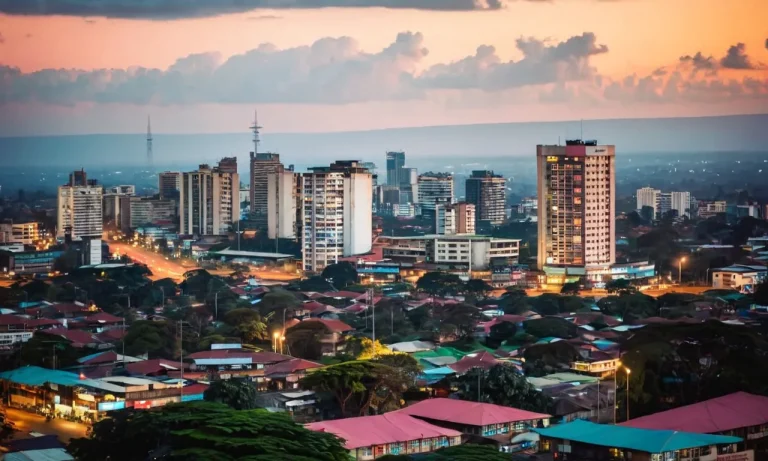Caribbean Beaches Without Sargassum In 2023
If you’re looking to visit pristine Caribbean beaches without annoying sargassum seaweed washing ashore, you’ve come to the right place. We’ll provide detailed information on the top beaches in 2023 that should remain free of sargassum so you can relax worry-free.
In this comprehensive guide, we’ll cover the latest sargassum forecasts for the Caribbean in 2023, discuss why some beaches tend to avoid sargassum invasions more than others, and provide a list of the top 5 sargassum-free beaches you’ll want to visit this year.
Sargassum Outlook for the Caribbean in 2023
Current Forecasts
The current forecasts for the presence of Sargassum in the Caribbean in 2023 are looking promising. According to experts, the amount of Sargassum seaweed washing up on Caribbean beaches is expected to be significantly reduced compared to previous years.
This is great news for tourists and locals alike, as the presence of Sargassum can have a negative impact on beach experiences.
Several factors contribute to the forecasts for 2023. One important factor is the El Niño Southern Oscillation (ENSO) phenomenon. The ENSO cycle affects ocean temperatures and currents, which in turn influence the growth and distribution of Sargassum.
Current predictions suggest that the ENSO conditions in 2023 will be less favorable for the excessive growth and transport of Sargassum to the Caribbean.
Historical Trends and Why 2023 Looks Promising
To understand why 2023 looks promising in terms of Sargassum outlook, it’s important to consider historical trends. Over the past few years, the Caribbean has been facing significant challenges with the influx of Sargassum. This has impacted tourism, marine ecosystems, and local economies.
However, researchers and scientists have been closely studying Sargassum and its patterns. Through their observations and analysis, they have identified that Sargassum blooms tend to follow a cyclical pattern.
This means that after periods of high Sargassum presence, there is typically a period of lower presence.
Based on historical data and the cyclical nature of Sargassum blooms, experts believe that 2023 will be a year with reduced Sargassum presence in the Caribbean. This is great news for beachgoers and tourism-dependent businesses in the region.
It’s important to note that while the forecasts for 2023 are promising, it’s still advisable to stay updated on the latest information closer to your travel dates. The presence of Sargassum can vary depending on factors such as weather patterns and ocean currents.
Websites like www.caribbeanseaweed.com provide real-time updates on Sargassum conditions in the Caribbean, helping travelers make informed decisions.
Why Some Caribbean Beaches Avoid Sargassum
When it comes to enjoying a pristine beach experience in the Caribbean, one of the factors that can make or break the trip is the presence of sargassum seaweed. Sargassum, a type of brown algae, has been known to wash up on many Caribbean beaches, creating a less than ideal beach environment.
However, there are certain beaches in the Caribbean that seem to consistently avoid the sargassum invasion. Here’s why:
Location and Currents
One of the main reasons why some Caribbean beaches manage to stay sargassum-free is their strategic location and the patterns of ocean currents. These beaches are often situated in areas where the prevailing currents do not bring in large amounts of sargassum.
The ocean currents play a crucial role in transporting the seaweed, and beaches that are located in areas where the currents flow away from the sargassum patches are more likely to remain unaffected.
For example, beaches located on the western side of certain Caribbean islands may be shielded from sargassum influx due to the prevailing eastern currents that carry the seaweed away. This natural barrier helps to keep these beaches free from sargassum, providing visitors with a pristine and enjoyable beach experience.
Nearby Barriers like Reefs and Headlands
Another reason why some Caribbean beaches are able to avoid sargassum is the presence of nearby barriers such as reefs and headlands. These natural formations act as physical barriers, preventing the sargassum from reaching the shores.
The dense and complex structure of coral reefs, for example, can effectively trap sargassum and prevent it from drifting towards the beaches.
Similarly, headlands and rocky outcrops can also act as obstacles, redirecting the seaweed away from the coastline. These natural barriers not only protect the beaches from sargassum, but they also contribute to the overall beauty and uniqueness of the coastal landscape.
The 5 Best Sargassum-Free Caribbean Beaches in 2023
Grace Bay in the Turks and Caicos
Grace Bay in the Turks and Caicos is renowned for its pristine white sands and crystal-clear turquoise waters. It has consistently been ranked among the top beaches in the world, and in 2023, it remains untouched by sargassum.
Visitors to Grace Bay can enjoy a range of water activities such as snorkeling, kayaking, and paddleboarding. The beach is also lined with luxurious resorts, restaurants, and bars, offering visitors a perfect blend of relaxation and entertainment.
Eagle Beach in Aruba
Eagle Beach in Aruba is another stunning Caribbean beach that remains sargassum-free in 2023. With its powdery white sands and gentle waves, it is a paradise for beach lovers. Eagle Beach is famous for its iconic Divi Divi trees, which provide shade and add to the picturesque scenery.
Visitors can take long walks along the shore, go for a swim, or simply relax under the shade of the trees. The beach is also home to several beachfront resorts and restaurants, offering visitors a comfortable and enjoyable stay.
Seven Mile Beach in the Cayman Islands
Seven Mile Beach in the Cayman Islands is a stunning stretch of coastline that remains free from sargassum in 2023. With its soft, sandy shores and clear, turquoise waters, it offers a perfect setting for sunbathing, swimming, and snorkeling.
The beach is lined with luxury resorts, beach bars, and restaurants, ensuring visitors have everything they need for a memorable vacation. Whether you’re looking for relaxation or adventure, Seven Mile Beach has something for everyone.
Pink Sands Beach on Harbour Island, Bahamas
Pink Sands Beach on Harbour Island in the Bahamas is known for its unique pink sand, which gives the beach its name. This stunning beach remains sargassum-free in 2023, allowing visitors to enjoy the beauty of the pink sand and clear blue waters.
Pink Sands Beach offers a tranquil and secluded atmosphere, perfect for couples and honeymooners. Visitors can take leisurely walks along the beach, swim in the calm waters, or simply relax and soak up the sun.
Playa Norte on Isla Mujeres, Mexico
Playa Norte on Isla Mujeres, Mexico, is a hidden gem in the Caribbean that remains free from sargassum in 2023. This pristine beach boasts soft white sands, calm turquoise waters, and stunning views of the Caribbean Sea.
Playa Norte is known for its shallow waters, making it ideal for families with children. Visitors can relax in beachside hammocks, snorkel around the coral reefs, or enjoy a refreshing drink at one of the beach bars. It’s a true paradise for beach lovers.
Conclusion
We hope this guide has provided everything you wanted to know about the best Caribbean beach options for avoiding nasty sargassum seaweed this year. The latest forecasts suggest 2023 will be better than recent years, and we’ve outlined insider tips on how to pick the right beaches based on location, currents and barriers.
Enjoy your sargassum-free Caribbean vacation!








